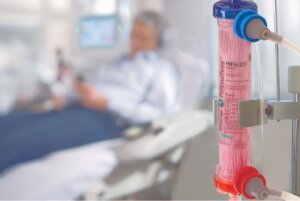by
Olga Deshchenko, DOTmed News Reporter | November 10, 2010

Diacap Polysulfone+
HiFlo Dialyzer
This report originally appeared in the November 2010 issue of DOTmed Business News
The Centers for Medicare & Medicaid Services kept the dialysis industry on its toes this summer. After submitting 1,600 comments on the first draft of the agency’s revamped payment system - the most momentous change to the sector in decades - everyone from patient advocacy groups on Capitol Hill to nonprofit providers in rural America waited.
The final End-Stage Renal Disease Prospective Payment System rule was unveiled on July 26, and after deciphering the 923-page document, the industry let out a collective sigh of relief — for the most part.



Ad Statistics
Times Displayed: 137004
Times Visited: 7945 MIT labs, experts in Multi-Vendor component level repair of: MRI Coils, RF amplifiers, Gradient Amplifiers Contrast Media Injectors. System repairs, sub-assembly repairs, component level repairs, refurbish/calibrate. info@mitlabsusa.com/+1 (305) 470-8013
“The final rule is a lot less draconian than the proposed rule was last year,” says Dr. Jay Wish, medical director, hemodialysis services, with the University Hospitals Case Medical Center in Cleveland. “It appears that CMS actually did listen to the comments and pulled back appropriately.”
Although the final rule is better than anticipated, changes brought on by the new PPS will require providers to overcome unprecedented administrative hurdles and take a cut in reimbursement, which for some facilities, may be a significant one.
Revenue streams might also shrink due to another rule, proposed by CMS on the same day it released the ESRD PPS – the Quality Improvement Program. The comment period for the QIP closed Sept. 24 and the program’s final rule is expected to surface later this year.
What’s in the new PPS?
For decades, CMS paid for dialysis based on a composite rate payment, which covered a bundle of services and paid separately for other aspects of treatment, such as drugs and lab tests. According to CMS, out of the approximately $9.2 billion Medicare paid for dialysis services in 2007, about $3.5 billion was paid for separately billable services.
“Over time, the number of additional services paid outside of the composite rate has grown significantly,” says Ellen Griffith, CMS spokeswoman. “Particularly, the payment for drugs related to dialysis services has grown very rapidly.”
Congress altered the payment system by mandating that CMS develop a fully bundled payment system for ESRD services in the Medicare Improvements for Patients and Providers Act of 2008. The statute requires CMS to phase in the new bundling payment system over a four-year period. However, the agency is also giving providers an option to opt in into the plan entirely beginning Jan. 1. Providers who choose to transition into the new system will receive a blended payment: in 2011, facilities will get paid 75 percent based on the payment rate under the current composite system and 25 percent based on the new ESRD bundled payment system. The ratio will change by 25 percent increments annually until 2014, when all clinics reach the payment rate of the full bundled system.

